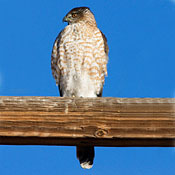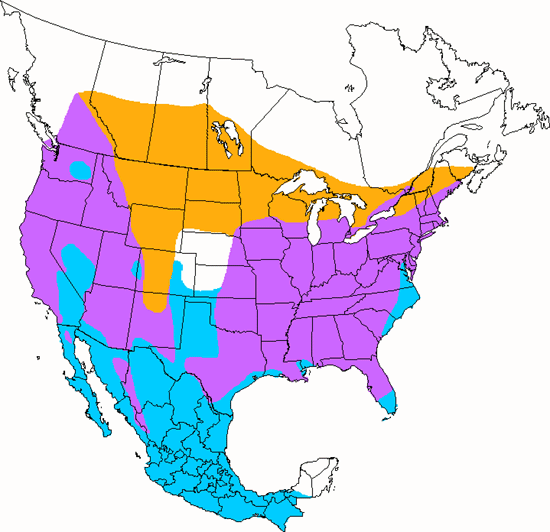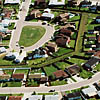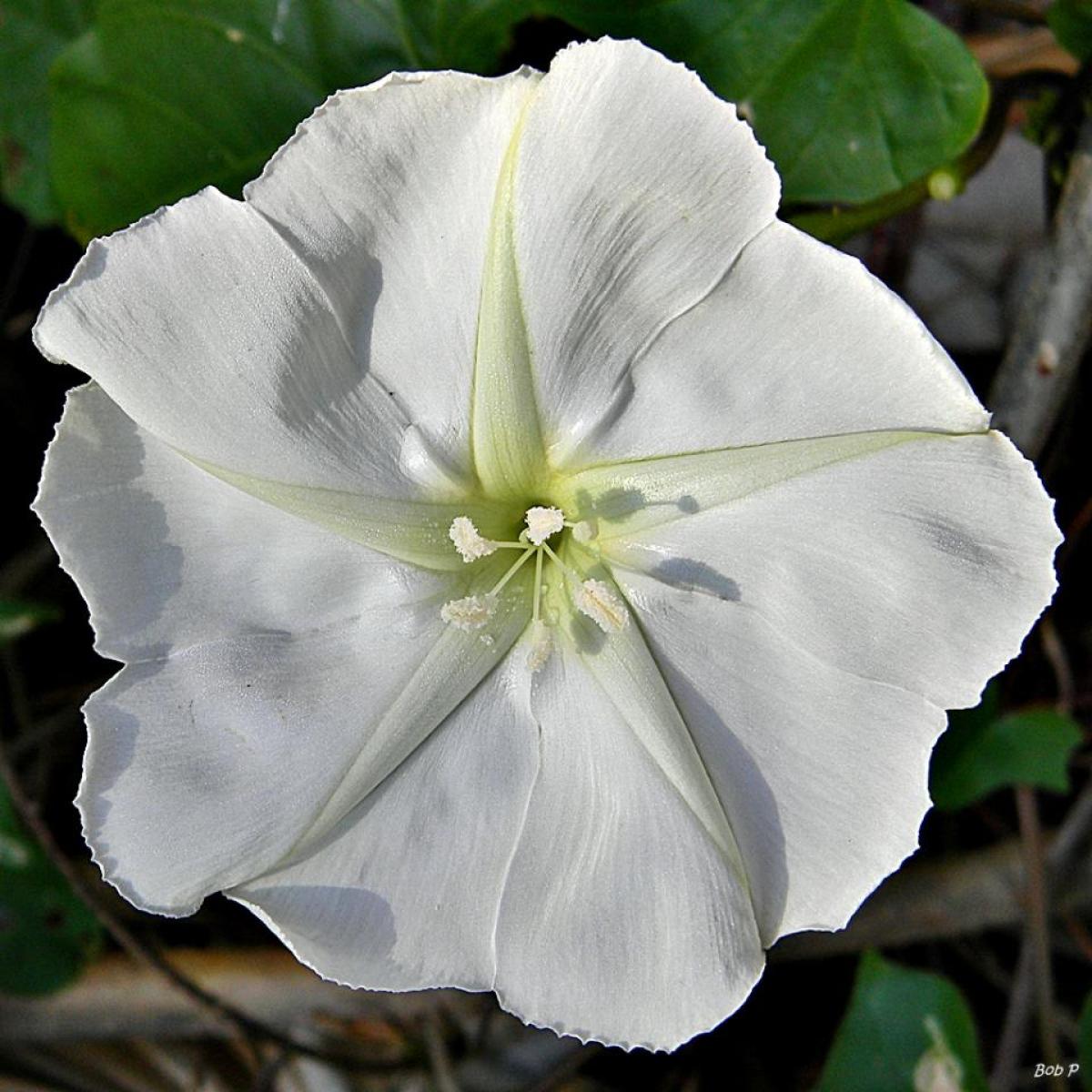Cooper's Hawk
Accipiter cooperi

Hawk Like

Length: 17 in. (42 cm )
In flight this species usually has a \flap-flap-sail\ technique that takes it quickly through the forest canopy and undergrowth, but occasionally it will get up high in the air and soar. The Cooper\'s Hawk is mainly a small bird hunter, but reptiles and frogs can tempt it. During the winter this hawk often visits bird feeders in cities and suburbs and dines on the small feathered prey concentrated at the seeds. The nest is a large bulky construction made of twigs and small branches and placed high in the canopy near the trunk of a tree. Males are often only two-thirds the size of the females.
The four-digit banding code is COHA.
Bibliographic details:
- Article: Cooper's Hawk
- Author(s): Dr. Biology
- Publisher: Arizona State University School of Life Sciences Ask A Biologist
- Site name: ASU - Ask A Biologist
- Date published:
- Date accessed: 4 December, 2025
- Link: https://askabiologist.asu.edu/activities/bird/coopers-hawk
APA Style
Dr. Biology. (). Cooper's Hawk. ASU - Ask A Biologist. Retrieved from https://askabiologist.asu.edu/activities/bird/coopers-hawk
Chicago Manual of Style
Dr. Biology. "Cooper's Hawk". ASU - Ask A Biologist. . https://askabiologist.asu.edu/activities/bird/coopers-hawk
MLA 2017 Style
Dr. Biology. "Cooper's Hawk". ASU - Ask A Biologist. . ASU - Ask A Biologist, Web. https://askabiologist.asu.edu/activities/bird/coopers-hawk
Be Part of
Ask A Biologist
By volunteering, or simply sending us feedback on the site. Scientists, teachers, writers, illustrators, and translators are all important to the program. If you are interested in helping with the website we have a Volunteers page to get the process started.









